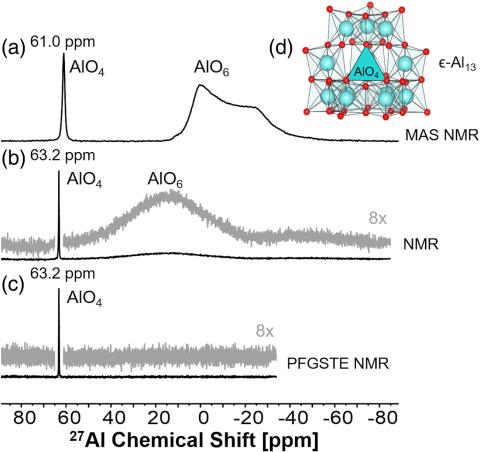Although nanometer-sized aluminum hydroxide clusters (i.e., ϵ-Al13, [Al13O4(OH)24(H2O)12]7+) command a central role in aluminum ion speciation and transformations between minerals, measurement of their translational diffusion is often limited to indirect methods. Here, 27Al pulsed field gradient stimulated echo nuclear magnetic resonance (PFGSTE NMR) spectroscopy has been applied to the AlO4 core of the ϵ-Al13 cluster with complementary theoretical simulations of the diffusion coefficient and corresponding hydrodynamic radii from a boundary element-based calculation. The tetrahedral AlO4 center of the ϵ-Al13 cluster is symmetric and exhibits only weak quadrupolar coupling, which results in favorable T1 and T2 27Al NMR relaxation coefficients for 27Al PFGSTE NMR studies. Stokes–Einstein relationship was used to relate the 27Al diffusion coefficient of the ϵ-Al13 cluster to the hydrodynamic radius for comparison with theoretical simulations, dynamic light scattering from literature, and previously published 1H PFGSTE NMR studies of chelated Keggin clusters. This first-of-its-kind observation proves that 27Al PFGSTE NMR diffusometry can probe symmetric Al environments in polynuclear clusters of greater molecular weight than previously considered.
Publication - Journal Article 27Al NMR diffusometry to AI13 kegging nanoclusters
Publication Image

Description
English
